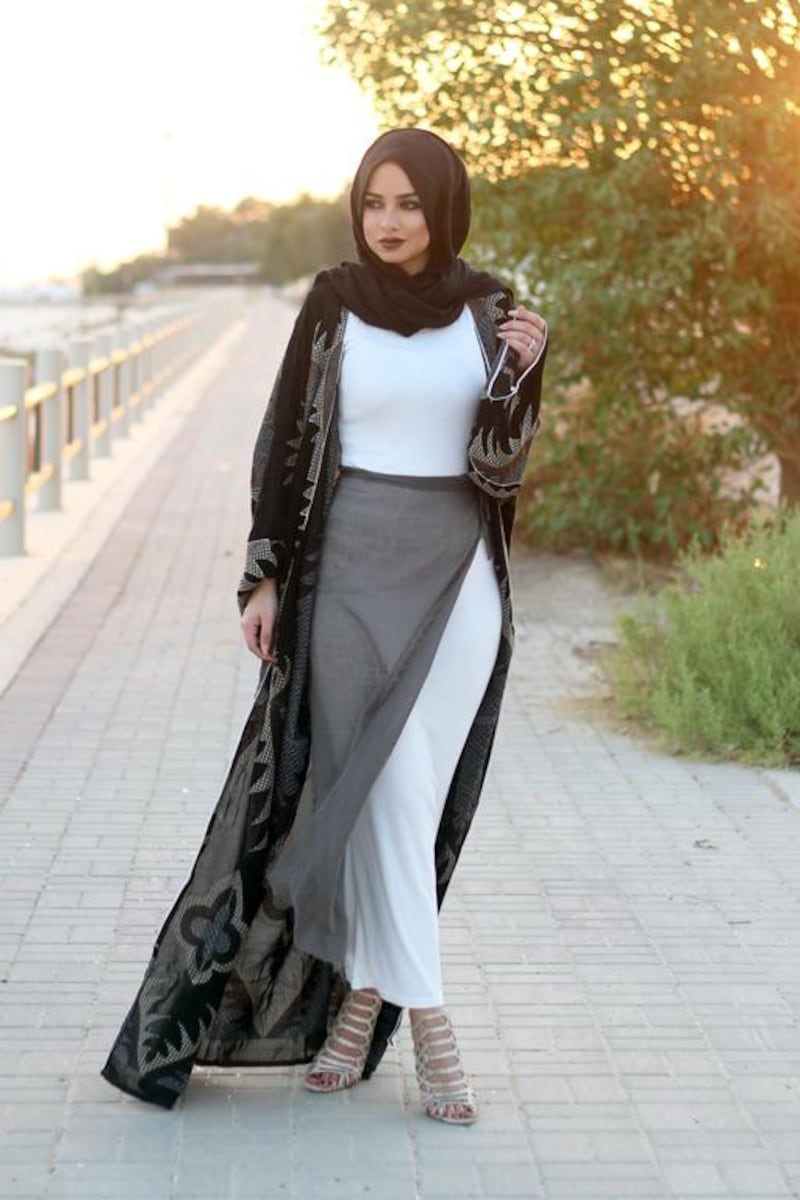Mariah Idrissi was shopping at the Westfield London mall when she was stopped in her tracks by a stranger who asked to take her photo. Decked out in a tracksuit, a turban-style hijab and without any make-up on, she found herself being scouted by fashion label H&M.
Sceptical at first as to why a western company might want a covered Muslim woman to model for them, Idrissi was assured the campaign was for a good cause.
That cause was sustainable-fashion, and when the advertisement was released, Idrissi was featured – wearing an oversized pair of sunglasses and a Shemagh-designed hijab – casually standing outside a fish and chip shop.
Her two-second cameo sent a wave of excitement and uncertainty through the fashion industry. Without even realising it, Idrissi had become the face of modest fashion, as the first hijab-wearing model for H&M, the second-largest global retailer, after Zara.
“I literally became a model overnight,” says the 24-year-old, who is of Moroccan and Pakistani heritage. “[Modest fashion] has been on the rise for years now – but the H&M campaign made it more mainstream.”
Since the advert was released, modest fashion has taken a leap forward, becoming more accepted by the masses. From more Muslim fashion bloggers popping up on Instagram to an all-hijab fashion show during New York Fashion Week in September, the trend appears to be here to stay.
Twenty-six-year-old Egyptian Soha Taha is a fashion blogger from Al Ain. She has amassed almost more than 200,000 followers on Instagram (@sohamt) in the past year – a telling indication of the growing trend.
“I first started sharing my outfits with family and friends without the intention of getting followers,” Taha says. “Soon people started to like and comment and follow and ask questions on where did you get this and that.”
This interest prompted her to launch her own clothing line. She attributes part of the sudden growing popularity of modest fashion to the rise in the use of social media.
As increasing numbers of hijab-wearing women, like Taha, began posting their day-to-day styles with hashtags referencing the hijab and modesty, their accounts started to gain traction, which caught the attention of renowned fashion labels.
The brands began to turn their focus towards social-media influencers, enlisting them to promote their goods. Before long, models turned into voices.
Idrissi, a public speaker and an ambassador for a children’s charity in the United Kingdom, believes that while modest clothing lines were previously often reserved for Ramadan and religious holidays, there has been a shift and it has become an all-year round proposition.
But Idrissi and Taha’s successes have not come without cultural challenges.
Their contributions to the fashion industry have triggered widespread debate online among Muslims about the very definition of modesty.
While many women welcomed the change and supported Idrissi and Taha for setting a new precedent in fashion, others condemned the idea of a Muslim model, labelling the idea inherently “immodest”.
“Of course I get a lot of negative comments,” says Taha. “Some say: ‘Why do you wear the hijab? You should just take it off,’ or ‘You are not even Muslim,’ or ‘Your clothes are skin-tight.’ This is something between me and God. But, sometimes they really get to me.”
This month, Taha posted a picture of herself wearing a black corset at Fashion Forward Dubai. She says the picture “drove people crazy”. Even though it was styled modestly, several followers criticised her, and she was even compared to Kim Kardashian.
She says her style, which is both edgy and modern, is not always to everyone’s taste and some find that hard to accept.
There are rules for the hijab, says Dr Radeya Salem Al Wafi, a Mufti with the General Authority of Islamic Affairs, Awqaf. Clothing must not be transparent, transcribe the body or attract attention. Any infringement would result in the photographs being deemed unacceptable.
This being said, she added that the act of being photographed was acceptable.
“[Bloggers] must know when posting pictures on social media that they are influencing their followers,” she says. “When they are being photographed they must think how will this picture come out and how will people see it? Are they sharing something that will help society or hurt it?”
Dr Ahmad Falah Alomosh, a sociology professor at the University of Sharjah, says the hijab is not restricted by strict rules.
“In this day and age, there is no one form for the hijab,” says Alomosh. “It depends on cultures and different countries. Every culture and tradition has its style.”
He believes the focus should be shifted to younger generations, and that it is important to raise them to be more open to diversity, and that judging the faith of others is not acceptable.
artslife@thenational.ae





